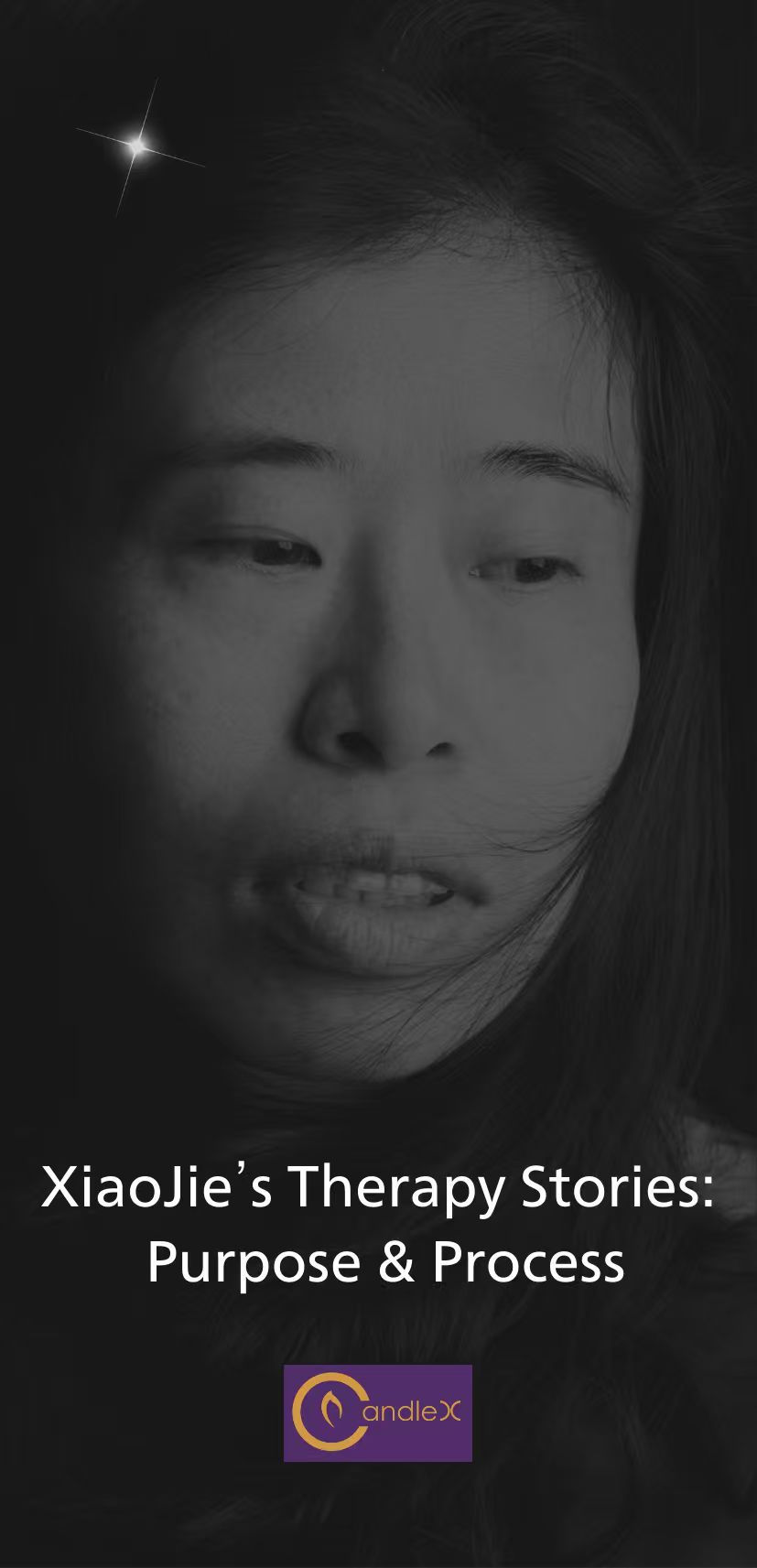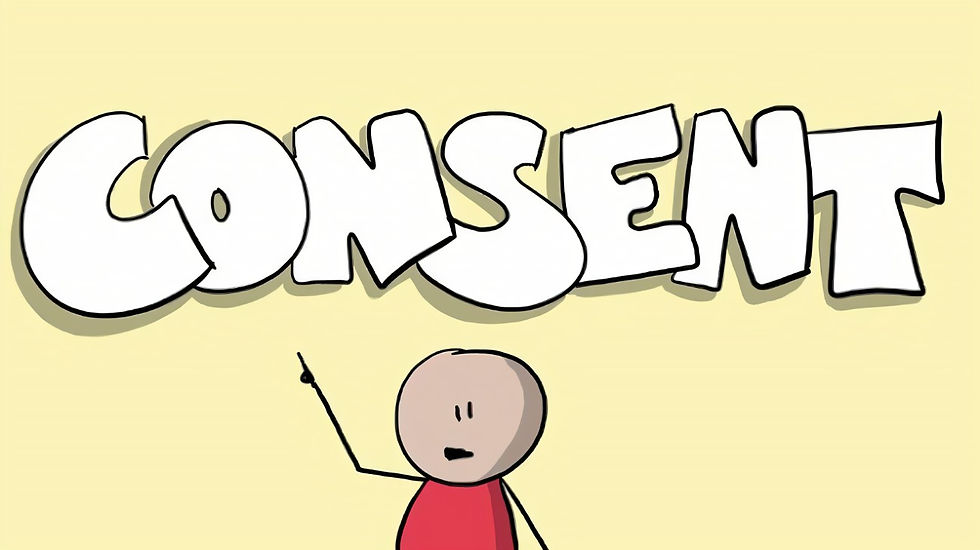Xiaojie's Therapy Stories: Intentions & Principles
- candleXJ
- Sep 7
- 8 min read

Xiaojie Qin | Psychotherapist | Beijing
This year (2025), I began sharing stories of my therapy sessions with clients as part of our CandleX’s Psychoeducation Program. I’d like to take this opportunity to share the intentions and principles behind these writings.
1. Gratitude to My Clients
None of these stories could be shared without the trust and consent of my clients. I am deeply grateful for your support of my role as a “dual-role” mental health professional. Currently, half of my work is dedicated to therapy, and the other half to directing mental health programs both in the community and corporate world.
These articles are intended not only for general readers, but also to offer reassurance to those hesitant about starting therapy—giving them a glimpse behind the closed doors of the therapy room. I am also involved in several initiatives supporting the growth of the mental health field, including guiding aspiring professionals through regular webinars and facilitating community and corporate workshops. Many participants have expressed appreciation for these shared stories. It is the courage, progress, and healing of my clients that bring light to those still struggling. On their behalf, I extend my heartfelt thanks.

2. Exploration of Therapeutic Technique
Although my recent (summer of 2025) articles are organized by different therapeutic approaches, I recognize that psychotherapy encompasses both foundational micro-skills and broader theoretical frameworks. From a “helicopter view,” everything is interconnected. My intent is not to argue that one approach is superior to another, but rather to illustrate how each has been both beneficial and limiting throughout my professional practice.
When writing, I immerse myself deeply (maybe a bit too deep on some days sitting for hours) in reviewing a particular client’s full therapeutic journey—spanning several months to several years. The process for each article is meticulous yet profoundly meaningful: I reflect on how techniques were applied and refine my understanding of each method’s strengths and constraints. Although framing my writing within therapeutic traditions has its imperfections, it helps me transition from structured techniques toward a more intuitive, fluid practice. I see myself gradually progressing toward a formless mastery—much like a follower of the Dao.
3. Exploring “What Kind of Therapist I Am”
The therapeutic space is filled with emotion—not only for clients, but for therapists as well. I hope to convey the inner world of the therapist: the challenges, reflections, and continual self-growth that this work demands. This reflective process not only deepens my own skills but also serves as a form of public education. Within a mental health landscape that can often feel crowded and confusing, I hope my stories encourage readers to look beyond titles and credentials, and focus instead on the process and substance of therapy itself.
I hold a Master’s degree in Counseling from Monash University and two Chinese national certifications: National Level Three Psychological Counselor and National Psychotherapist. That said, I discourage placing excessive emphasis on distinctions between titles such as “psychologist,” “therapist,” or “counselor.” When a practitioner sits with a client, what truly matters is the therapeutic process itself.

4. Using Labels with Great Caution
Diagnostic or psychological labels can serve as useful tools for practitioner’s learning, understanding and communication. Clients may even initially find relief in a label—it can settle a confused mind. Yet this often comes at the cost of limiting their belief in their capacity to transform. No label can fully capture a living person.
I hold myself from describing my clients as “a bipolar case” or “passive-aggressive,” as is common in many clinical articles. Instead, I see them as people navigating complex emotions, each with unique stories and profound courage. I strive for my writing to feel light—to ease burdens, not add to them.
5. Illustrating “Gradual Recovery”
Healing is not a binary shift from “disordered” to “healthy.” It is a gradual, non-linear path. Through my writing, I hope to encourage us all to step away from simplistic black-and-white thinking and embrace a more nuanced, progressive view of human experience.

6. Presenting the Real Therapeutic Relationship
The stories I share include not only ‘successes’, but also moments of ‘failure’.My clients and I share a human encounter—a process of trial and adjustment that defies any textbook formula. Through authentic narration of actual therapy room experiences, I hope readers can see that the therapeutic relationship is dynamic and resilient—marked by collaboration, tension, transference and countertransference, moments of rupture and repair, and sometimes even disappointing departure.
This reminds me, as a therapist, to keep growing—to support clients with greater sensitivity and fluency as we both navigate cognitive and emotional shifts, reducing unnecessary distress along the way.
7. Creating a “Healing Experience”
Each article is first shared with the protagonist of the story—my client—and I obtain their formal consent for publication. This is not merely an ethical requirement; it is part of the healing experience I wish to offer to my clients. Sharing is caring, they say.
Reading Irvin Yalom’s The Gift of Therapy deeply inspired me. His practice of occasionally reviewing the therapy process in writings with clients between sessions struck me as ethically delicate during my training, yet I deeply admire how a master therapist can—with stability and heartfelt care—guide clients into unexpected places of healing.
When a client reads their own story, told with respect, understanding, and tenderness, and sees their struggle reframed as an act of self-protection rather than a flaw—that moment becomes a powerful affirmation and witness to their journey. I share with this intent.

8. Use of AI in the Writing Process
As an bi-lingual therapist (Chinese and English), I let my emotions choose the language it wants to use for this articles. Some articles were written in Chinese, some in English. In both cases, artificial intelligence was used as a tool to assist in the writing process. I take caution in the use of AI, but limit it for its support in organizing early drafts and serving as an editor—refining grammar, clarifying ideas, and improving flow—while always preserving my personal voice, professional values, and core perspectives. All therapeutic insights and positions expressed originate from me.
Thank you for reading and for your understanding.

秦小杰|心理咨询师/心理治疗师| 北京
今年(2025年),我开始分享我和来访的咨询故事。在这里,我想谈谈书写这些故事时的初心与约定。
1. 感谢我的来访
没有来访的支持与同意,这些故事无法被发表。我由衷感谢你们支持我作为“两栖”心理健康工作者的角色——目前,心理咨询占我工作的一半,另一半则用于心理健康教育倡导和社区社会情感项目支持。
所写的文章除了供大众阅读,也希望能给那些犹豫是否咨询的人一些故事,让他们了解闭门的咨询室中发生着什么。我也一直为行业做些小事:支持徘徊在行业门口的人,通过定期在线研讨会分享从业经验,提供参考信息;在社区与企业工作坊中,大家也很感谢我能把故事在共同空间中讲述。这些故事凝聚关注,也传递力量——是来访所呈现的勇气、进步与修复,给予了仍在挣扎的人希望。在此,我替他们感谢我的来访。

2. 咨询技术探索
尽管近期(2025年夏)文章多以流派分类写作,但我深知,咨询技术既有基础的微观技巧,也有所谓流派之分。若以“直升机视角”来看,万物彼此关联。我并不想讨论某一流派优于另一流派,更多是想呈现:在我专业成长的过程中,不同流派都带给我巨大助益,同时也存在局限。
书写时,我会深入回顾整个咨询过程——一个来访咨询短至数月,长至数年。书写过程繁琐却珍贵:重新审视技术应用,进而思考某一模式的适用与局限,以及我作为咨询师擅长的和还需学习改进的。以流派为章节分类来写作,是简便的一种方式,而这个过程帮助我更好的整合这些技术,将有形技术逐渐融于无形。
3. 探索“我是怎样的咨询师”
在咨询空间中,来访者会经历诸多情绪,而咨询师同样也会。我希望呈现出咨询工作中的情绪、挑战与反思,以及一个咨询师所需的自我成长。我坚信,一个好的心理咨询工作者,是有着足够自我觉察、自我调节能力、也是不断在自我实现中生活工作。这样的整理,既能深化我的技术,也是一种社会倡导——希望在这个繁杂混乱的咨询市场中,大家更关注技术与修炼,而非标签。
我持有国家颁发的心理咨询师证和心理治疗师证,但并不鼓励过度纠结“心理学家”“咨询师”或“治疗师”等职称差异。当一位从业人员坐在来访面前,我们更应聚焦的,是咨询过程本身。

4. 拒绝“标签化”
诊断标签是为了便于理解与沟通,但它无法定义任何一个活生生的人。尽管一些来访也可从标签中感受到瞬间的焦虑释放和平和,但标签是一个隐形的框架,它终将成为阻碍一个人最大限度的发展,撕下标签,是一个沉重且不必要的负担。
我的工作对象,我尽我所力,去转化“一个双相患者”或“一个多动症患者”,为“一个正经历多种情绪、有独特故事和巨大勇气的人”。我希望文字是轻盈的,是来卸下负担,而非增添负担。
5. 展现“渐进式康复”
我希望让大众了解真实的咨询过程是怎样的。心灵的康复,并非从“健康”到“不健康”的二元切换,而是一条蜿蜒曲折的渐进之路。愿我们所有人能偶尔跳出简便的二元建构,渐进而细腻地观察世界。

6. 呈现真实的咨访关系
在分享的咨询故事中,不仅有‘成功’的经验,也有‘失败’的片段。我希望通过这些真实的叙述,让大家认识到咨访关系是一个充满弹性的过程,其中包含咨询师与来访者之间的互动、移情与反移情、关系的破损与修复——这些都是常见甚至必要的历程,甚至有些历程是无法再续的遗憾。咨询并非总是“来访时刻被稳稳接住”的理想化体验,而是充满人性化的尝试与调整。这也提醒我作为咨询师要不断进步,在帮助来访者进行认知调整或情感整合时,更加敏锐地减轻过程中的痛苦,让咨询体验更加自然流畅。
7. 被分享“疗愈的体验”
尤其重要的是,这些文章会先经由故事的主人公——我的来访者——过目,并取得书面授权。这不仅关乎知情同意,我希望他们在阅读时,也是一个疗愈体验。
读欧文·亚隆的《给心理治疗师的礼物》时,我深受触动。他会在咨询间隔与来访互信,分别回顾彼此咨询过程的体验——这种非常规操作,依我所学的伦理来看,仿佛走钢丝,但正是他书中提到,这个过程,出其不意的加深了他们的治疗效果。于我而言,当(已结束咨询的)来访读到自己的咨询故事,被以尊重、理解与温柔的方式讲述,当他们的挑战被理解为一种努力的自我保护而非缺陷,我希望他们感受到我本有的对他们的深刻的见证与肯定。

8. 写作中人工智能的使用
作为一个双语(中文、英文)心理工作者,我习惯性的部分文章用中文写,部分用英文(看当时我的情绪语言是什么)。无论哪种语言,在撰写中我使用了人工智能辅助,感谢它协助整理初稿,担任编辑角色:优化语法、澄清观点、调整流畅度,但严格保留我的写作风格、专业理念与核心观点,所有心理咨询见解与立场均出自本人。
感谢您的阅读与理解。


Comments